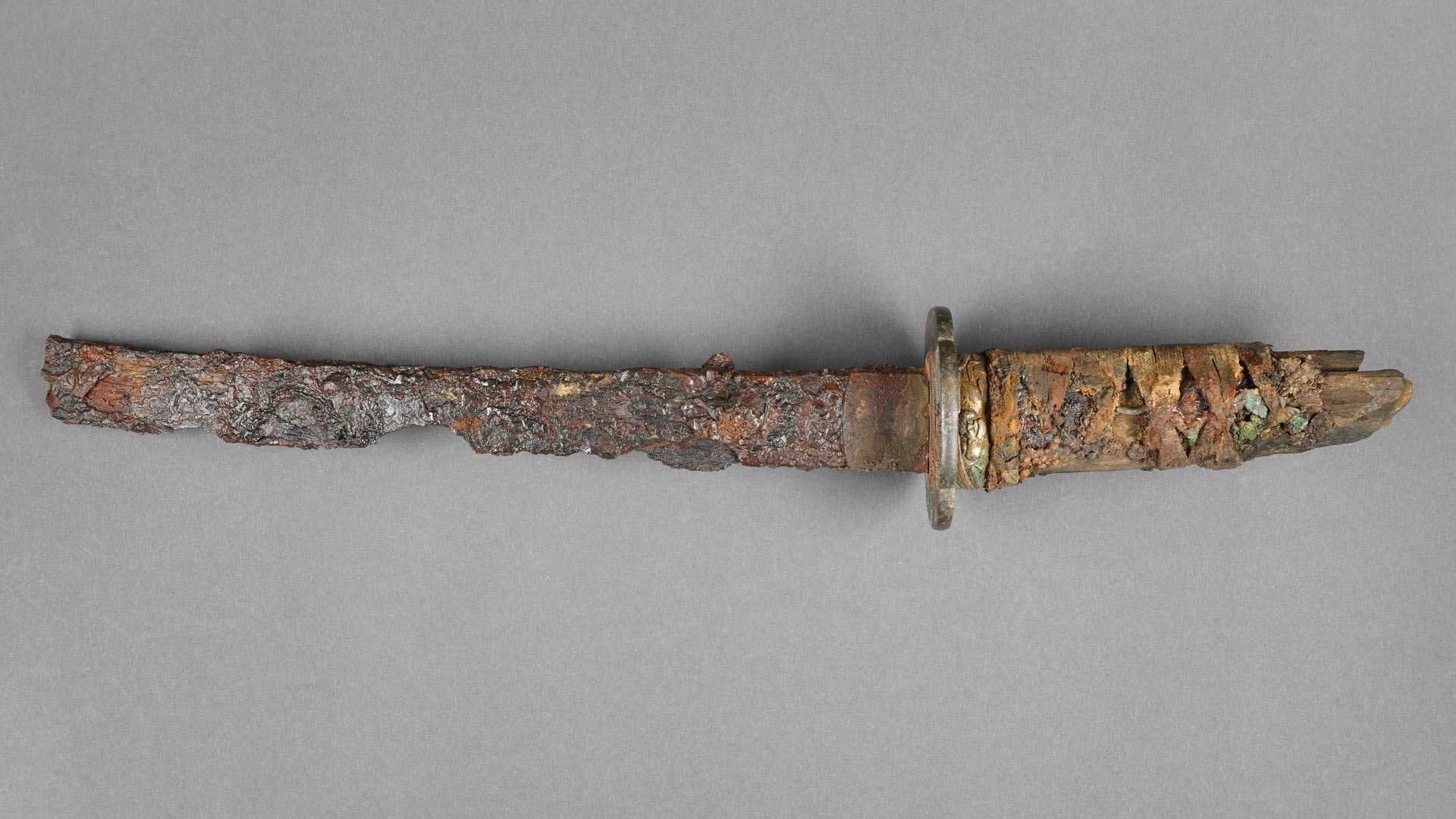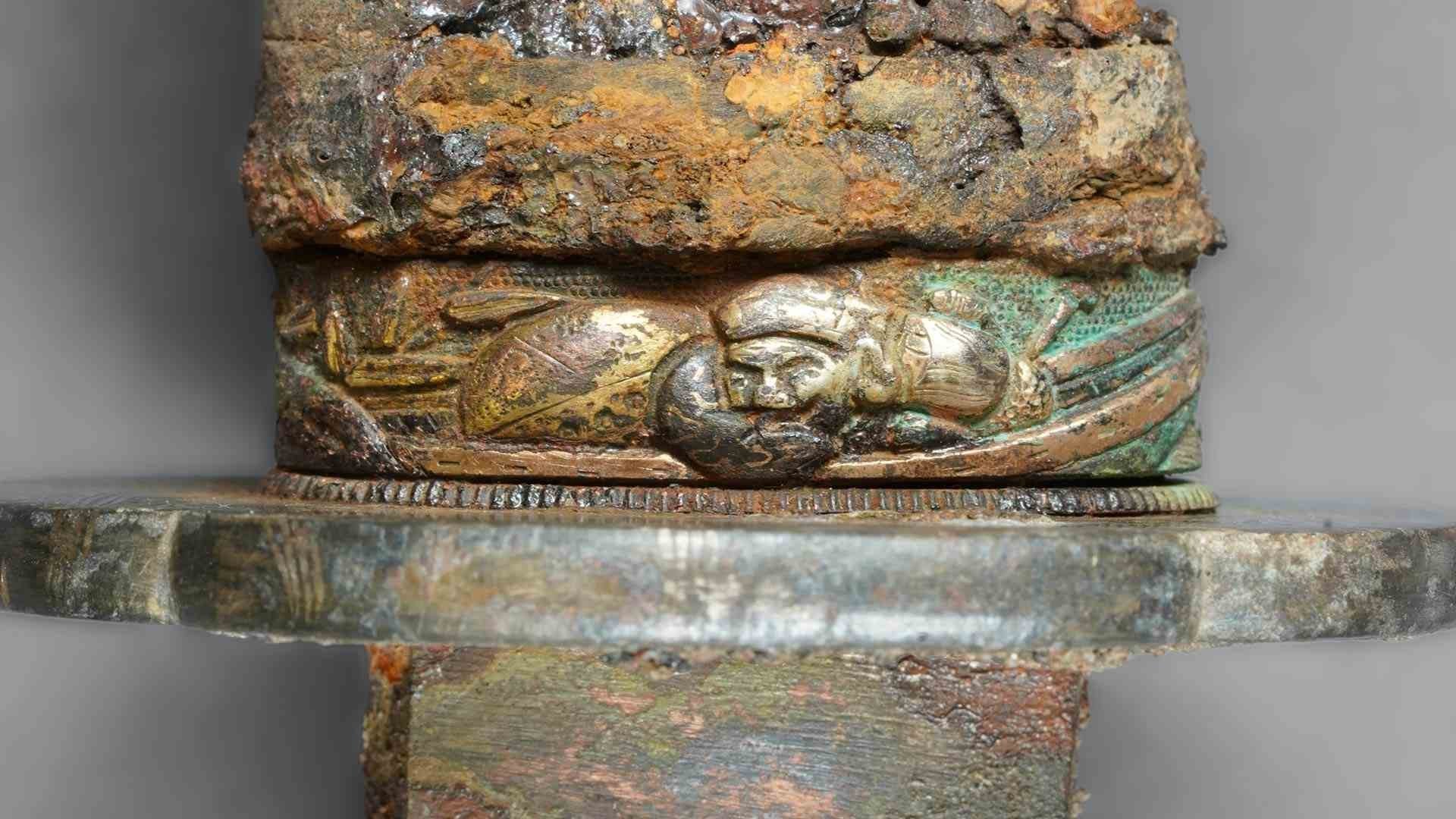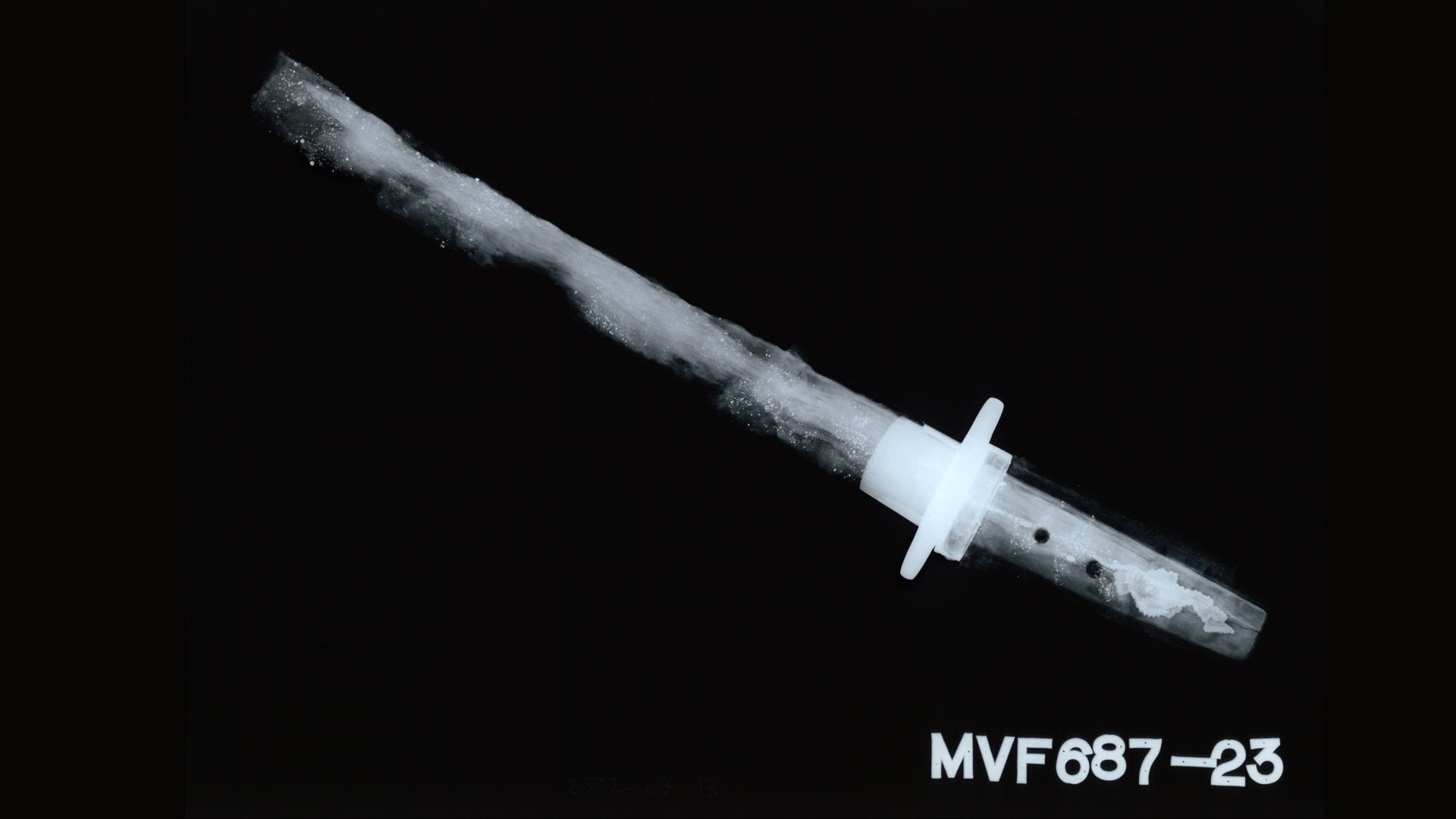Mysterious highly-decorated Japanese sword discovered in Berlin cellar destroyed during WWII
Sword dates to 17th century during Edo period, when country followed a strict policy of self-isolation
Archaeologists have unearthed a rare richly-decorated 17th century Japanese sword of unknown origin in the ruins of a Berlin cellar, destroyed during the Second World War.
The discovery is surprising as the sword is dated to Japan’s Edo period, when the country followed a strict policy of self-isolation to stop external colonial and religious influences, keeping its borders closed for almost three centuries.
“Who could have imagined that at a time when Japan was isolated and hardly any European traveler came to the country, such a long-used and richly decorated weapon had arrived here in Berlin?” said Matthias Wemhoff, Berlin’s state archaeologist and director of its Museum of Prehistory and Early History.
The sword was found in 2022 during excavations at cellars in Molkenmarkt, the oldest city square in Berlin, which was reduced to rubble during the Second World War.

In one of the cellar vaults at a former residential building in the square, archaeologists found a strongly corroded sword protruding from the rubble, which was then preserved and kept by Mr Wemhoff’s museum.
It was initially mistaken for a Soviet parade sable, but further studies revealed it to be a shortsword from Japan’s Edo period, between 1603 to 1868.
Researchers suspect the sword’s blade could be even older, likely dating to the 16th century.

During restoration work, it became clear that the heavily corroded sword was a Japanese shortsword – a wakizashi –reserved only for dignitaries as a status-related weapon.
While the sword’s origins remain unclear, the museum said in a statement that it may have been brought to Germany before the war, mostly likely during a diplomatic mission.
The sword’s handle appears to have been severely damaged on one side due to heat exposure.
But the handle’s wooden parts, the wrapping of textile and ray skin in places are still preserved.

Restoration work on the handle revealed a motif of the Japanese god of luck, Daikoku, who is recognisable by his characteristic hammer and rice bag.
Further restoration revealed fused ornaments of chrysanthemum and waterline motifs.
It became clear from X-ray analysis of the decorated sword that the blade was originally longer and later shortened.

Analysis showed the blade likely had a different handle originally, with the current one attached later.
“It is therefore much older than the handle and possibly even dates from the 16th century,” the museum said.
“This find shows once again which surprising objects in Berlin’s soil are waiting to be discovered,” Dr Wemhoff said.
Join our commenting forum
Join thought-provoking conversations, follow other Independent readers and see their replies
Comments
Bookmark popover
Removed from bookmarks